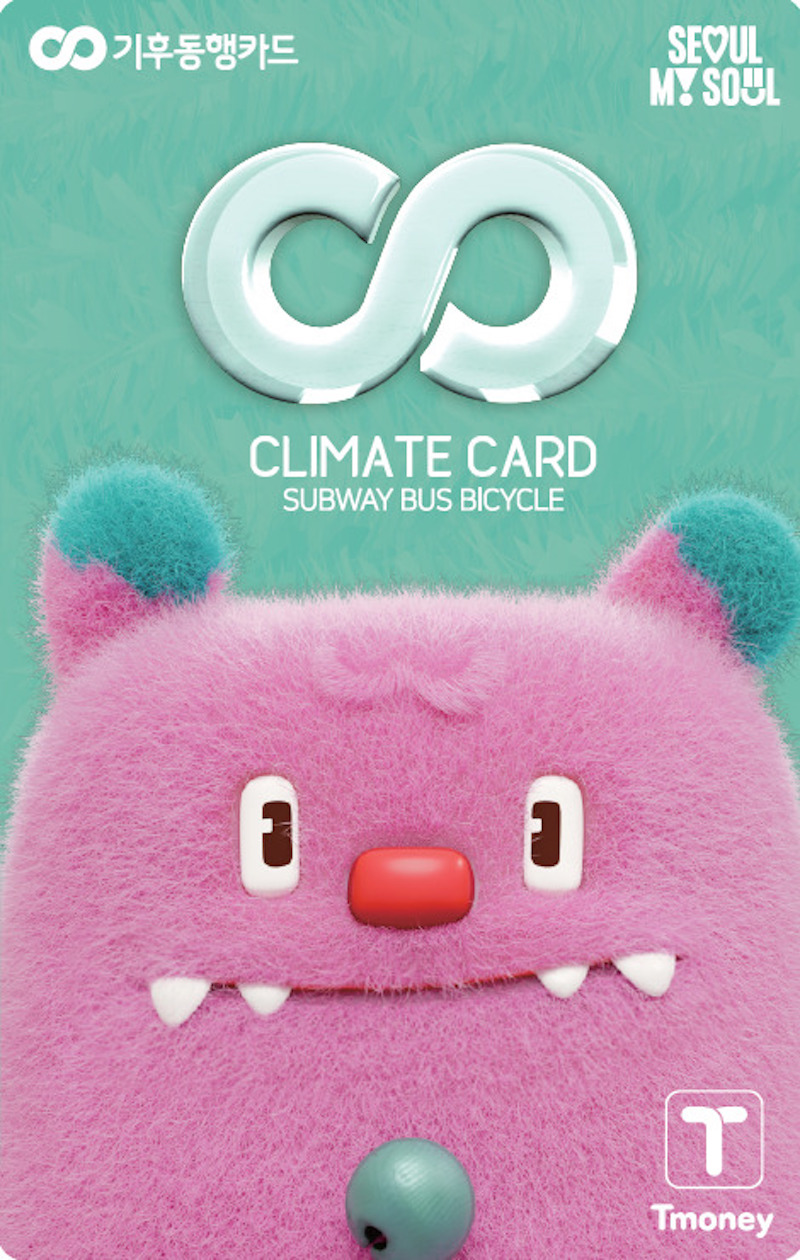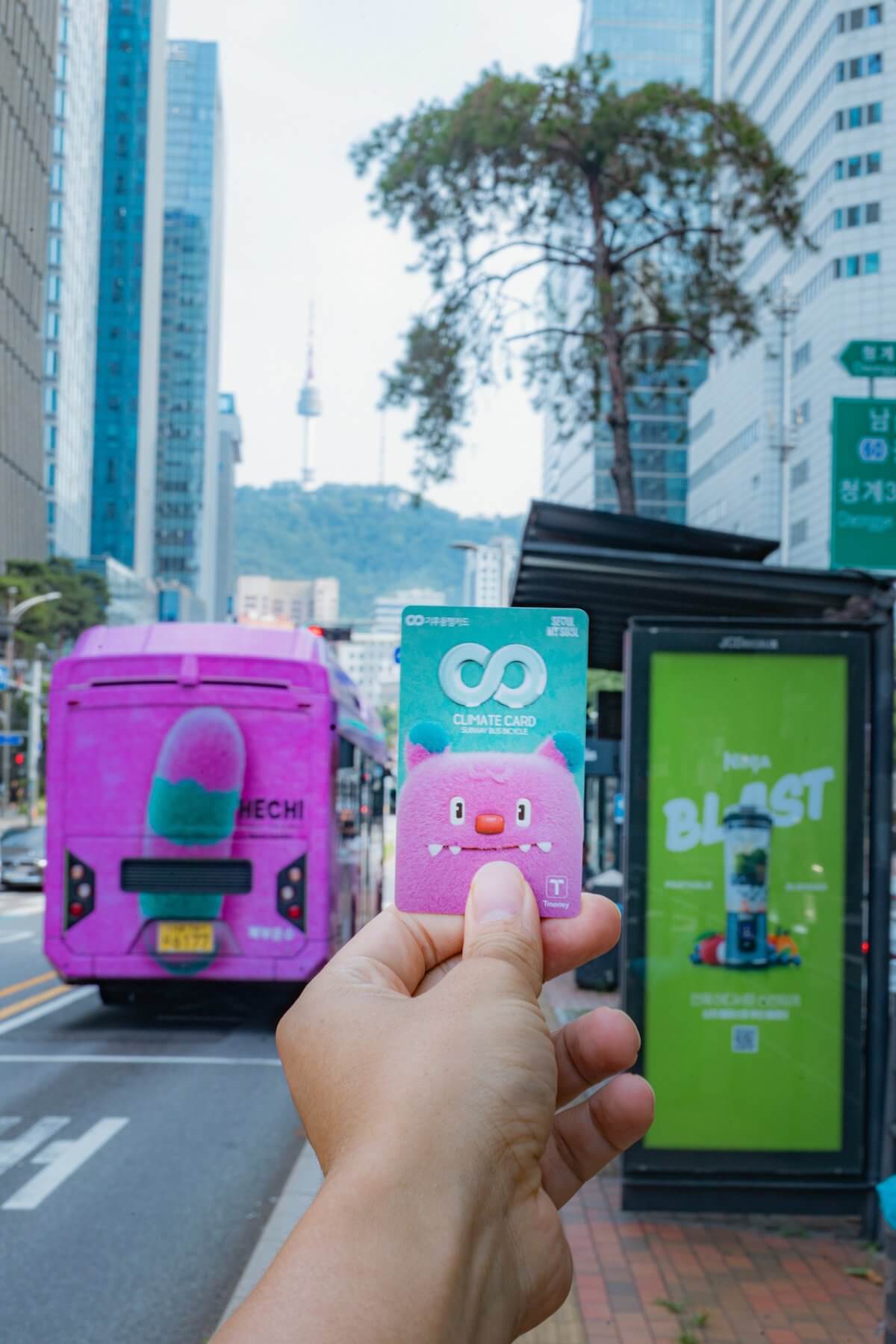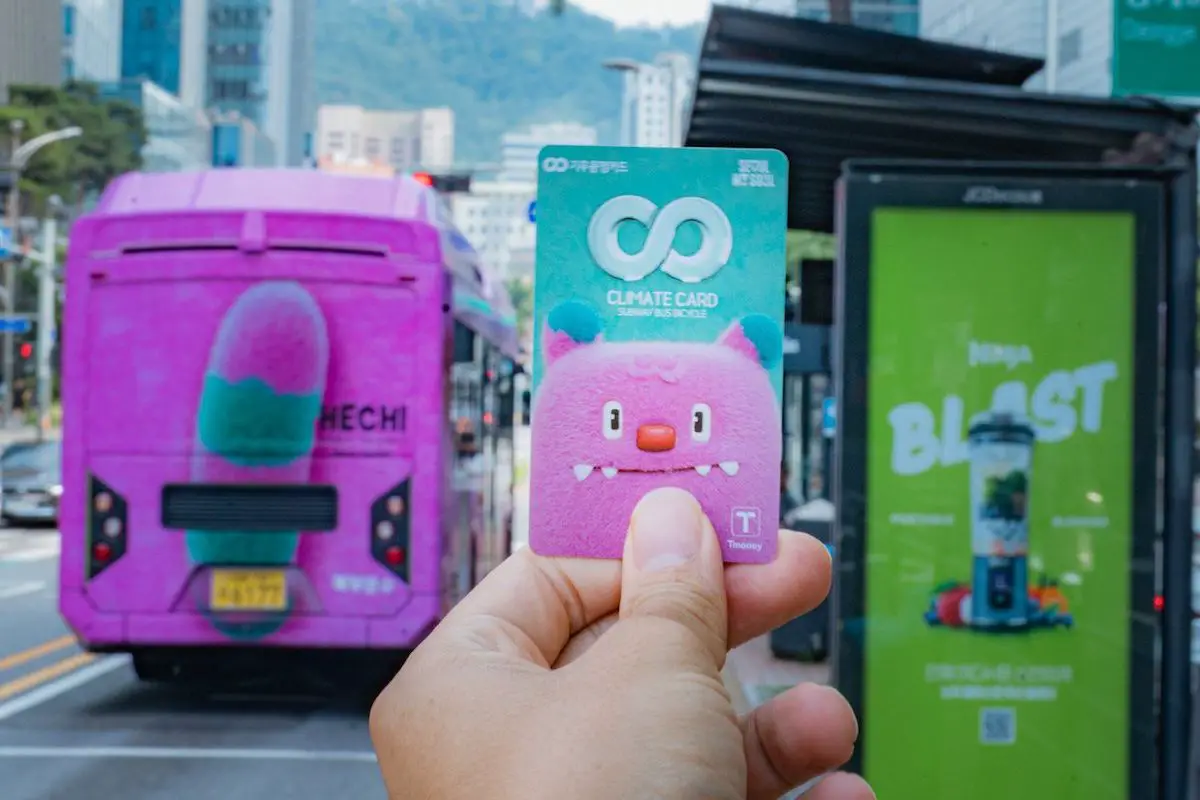Climate Card Seoul Guide: Price, Where to Buy & FAQs
Traveling to Seoul soon but don’t know which Korea tourist card is the best for public transportation? Aside from Discover Seoul Pass and T-Money Card, consider getting a Climate Card if you will mainly travel in Seoul.
This relatively new Korea Climate Card tourist pass was first launched in Jan 2024, so it still wasn’t available during our spring and winter trip to South Korea. If we were to go back to Seoul again, we’d definitely get this card while it’s still being offered.
Here’s everything you need to know about the Climate Card Seoul, from its price and where to buy to its usage and frequently asked questions (FAQs).
What is a Climate Card in Seoul, South Korea?


The Climate Card is an extensive transportation card that offers unlimited rides on Seoul-based subways, buses, Ttareungi (Seoul Bike), and Hangang Bus (Seoul Ferry) with validity periods of 1 day to 30 days. You can opt to get the physical or the mobile version of the Climate Card.
What is covered by the Climate Card?
The card covers the following:
- Seoul-based subway lines + Gimpo Goldline
- Gyeonggi-serviced subway lines (partial)
- Seoul-licensed buses (transit, town & night buses)
- Ttareungi (Seoul Bike)
- Hangang Bus (Seoul Ferry)
Covered Subway Sections:
- Line 1: Onsu Station and Geumcheon-gu Office Station to Dobongsan Station
- Line 2: All stations
- Line 3: All stations
- Line 4: Government Complex Gwacheon Station to Jinjeop Station
- Line 5: All stations
- Line 6: All stations
- Line 7: Onsu Station to Jangam Station
- Line 8: All stations
- Line 9: All stations
- Ui-Sinseol Line: All stations
- Sillim Line: All stations
- Gyeongui-Jungang Line: Tanhyeon Station to Guri Station/Seoul Station
- Suin-Bundang Line: Cheongnyangni Station to Ori Station
- AREX:
- Gimpo Airport Station to Seoul Station
- Incheon Airport: *Since 13 Sep 2024, you can already ride the train from Seoul to Incheon Airport Terminals 1 and 2, but not the other way around
- Gyeongchun Line: Cheongnyangni Station to Sinnae Station
- Seohae Line: Gimpo International Airport Station to Ilsan Station
- Gimpo Goldline: All stations
- Suin-Bundang Line: Cheongnyangni Station to Ori Station
- Gyeonggang Line: Pangyo Station to Imae Station
What is NOT covered?
The card does not cover the following:
- Sinbundang Line
- Subway lines outside Seoul
- Intercity/airport buses
- Non-Seoul-licensed buses
How much is a Seoul Climate Card?
The physical card itself costs only ₩3,000. If you wish to buy the pass with corresponding charges and inclusions, prices vary depending on the type of pass and validity period. Please see the latest Climate Card prices below:
| Pass Type | Price |
| Long-Term Pass | |
| 30-Day Pass (with Ttareungi + Hangang Bus) | ₩70,000 |
| 30-Day Pass (with Hangang Bus) | ₩67,000 |
| 30-Day Pass (with Ttareungi) | ₩65,000 |
| 30-Day Pass (no Ttareungi) | ₩62,000 |
| Short-Term Pass | |
| 1-Day Pass | ₩5,000 |
| 2-Day Pass | ₩8,000 |
| 3-Day Pass | ₩10,000 |
| 5-Day Pass | ₩15,000 |
| 7-Day Pass | ₩20,000 |
Notes:
- Short-term passes do not include Ttareungi and Hangang Bus.
- Prices are correct as of publication date. Visit Seoul Metropolitan Government’s official website for the latest rates.
Where to buy a Climate Card?


Buying a physical card
If you want to buy the physical card, you can go to the following locations:
Option 1: Seoul Metro Information Center
Visit any Seoul Metro Information Center located at Subway Lines 1 – 8.
Option 2: Seoul subway stations
You may also proceed to subway stations between Seoul Station and Cheongnyangni Station (Line 1).
Option 3: Convenience stores near subway stations
Alternatively, go to convenience stores near subway stations including Line 9, Ui-Sinseol Line, and Sillim Line.
Buying a mobile card
If you want the mobile version, simply download the mobile T-money app, sign up, and load up your Climate Card using a debit or credit card under your name.
How to use the Climate Card?
Like any other transportation card, it’s easy to use the Climate Card. Just tap the card (physical or mobile) on the card reader when riding and getting off the train or bus in Seoul.
How to top up the Climate Card?
You can top up your Climate Card at any charging kiosks located at subway stations including Seoul Metro Lines 1 to 8, Line 9, Ui-Sinseol Line, and Sillim Line.
Do note that you need to specify your start date within five days from first top-up. For instance, if you bought the card on Oct 1, you need to decide on the start date between Oct 1 and Oct 5.
Frequently Asked Questions (FAQs)


1. What’s the difference between a Climate Card and T-Money Card?
A Climate Card still acts as a T-Money Card but with unlimited rides on public transportation including trains, buses, bikes, and ferries in Seoul within your chosen validity period. Read our T-Money Card guide to know more.
2. Which one is better to use: Climate Card or Discover Seoul Pass?
It actually depends on your travel purpose. Both the Climate Card and Discover Seoul Pass serve as a T-Money Card to pay for public transportation.
The Climate Card gives you unlimited rides on Seoul-based public transportation, while the Discover Seoul Pass mainly gives you free or discounted access to attractions in Korea including N Seoul, Nami Island, and Lotte World. Read our Discover Seoul Pass guide to know more.
3. Can foreigners use a Seoul Climate Card?
Definitely! The Seoul Climate Card can be used by both locals and foreign visitors who want to take advantage of this mass transit pass within Korea’s capital city.
4. Can I use a Climate Card to go to Incheon airport?
Starting Sep 2024, you can use the Climate Card to ride the AREX train from Seoul to Incheon Airport Terminals 1 and 2, but not from Incheon Airport to Seoul. Read our Incheon Airport to Seoul transport guide for other options.
5. Do I need to register my Climate Card?
Although not required, you are encouraged to register the physical card on the T-money website after buying it to avail of the benefits such as using the Ttareungi (Seoul bike), monitoring card usage, and getting future enhancements and updates.
6. Is the Climate Card refundable?
Yes, you can request a refund provided it’s before the end of the card’s use period. The refund amount is the total charged amount minus the total amount used on public transportation and ₩500 fee. Foreigners who don’t have a bank account in Korea can request a cash refund at the T-Money headquarters.
7. When will the Climate Card expire?
The physical card itself is valid for 30 days from the chosen start date.
8. What are other Korea tourist card alternatives?
Aside from the Climate Card, which is only limited to Seoul, you can consider getting a Discover Seoul Pass, WOWPASS, and NAMANE CARD. Read our Korea tourist card guide for more options.
That’s basically everything to know about the Climate Card Seoul. Visit the Seoul Metropolitan Government’s official website for the most updated information on this new mass transit card in Seoul.
Read more 📖Shopping, eating & more!
Accommodation:
Visa guides for Filipinos: |

